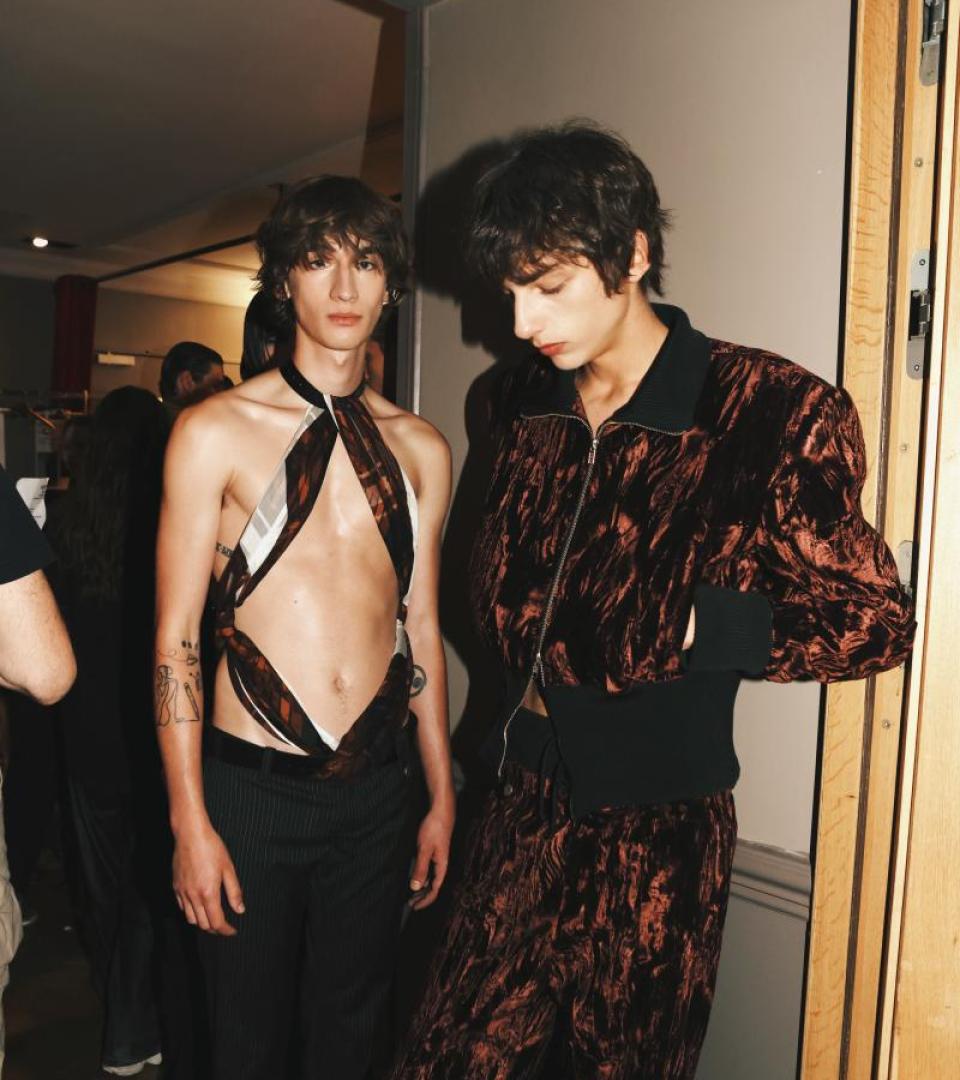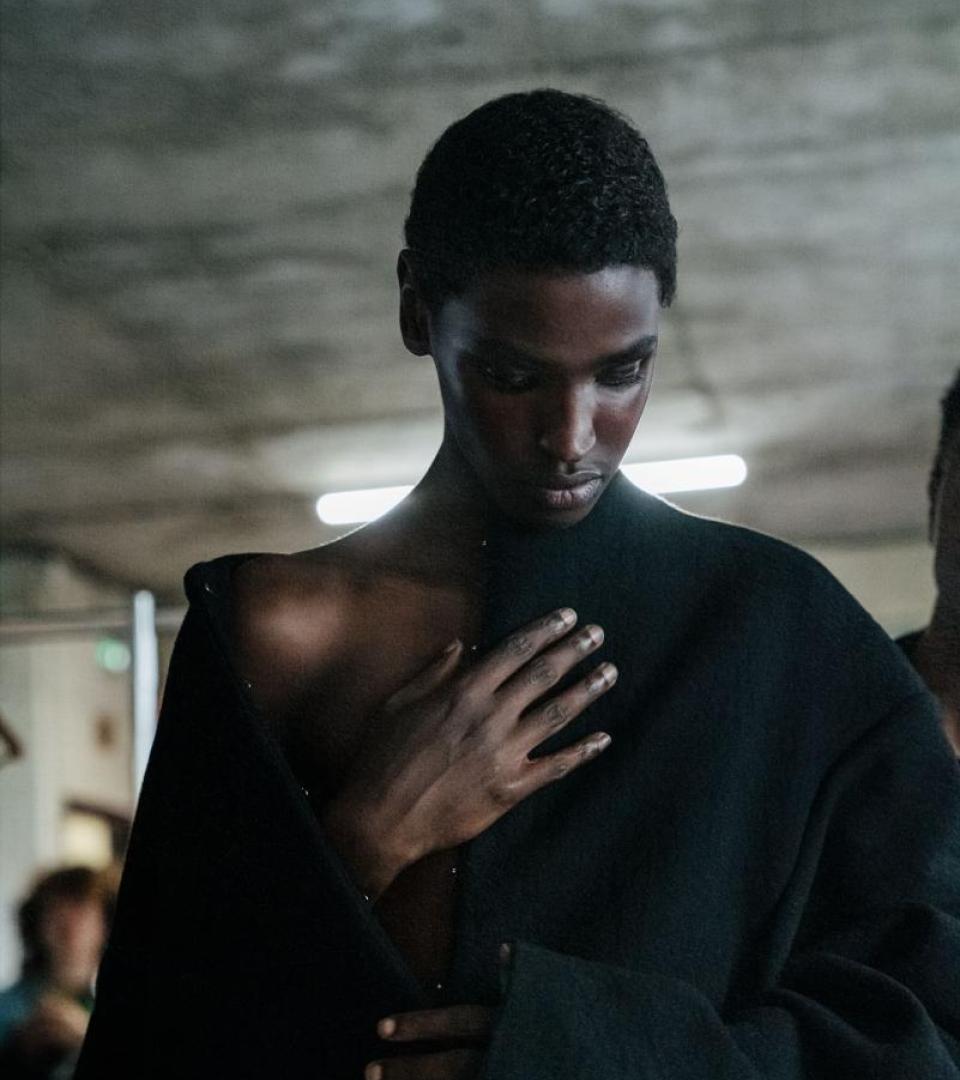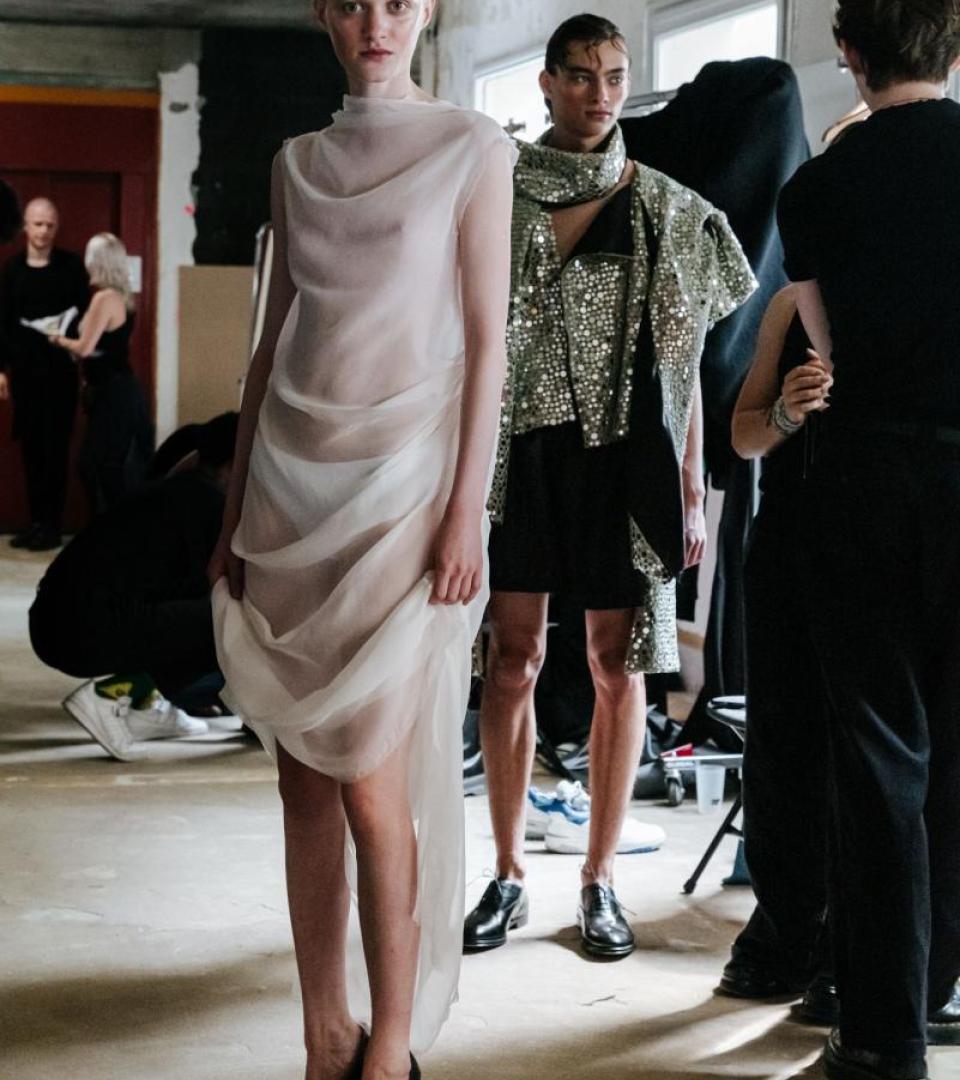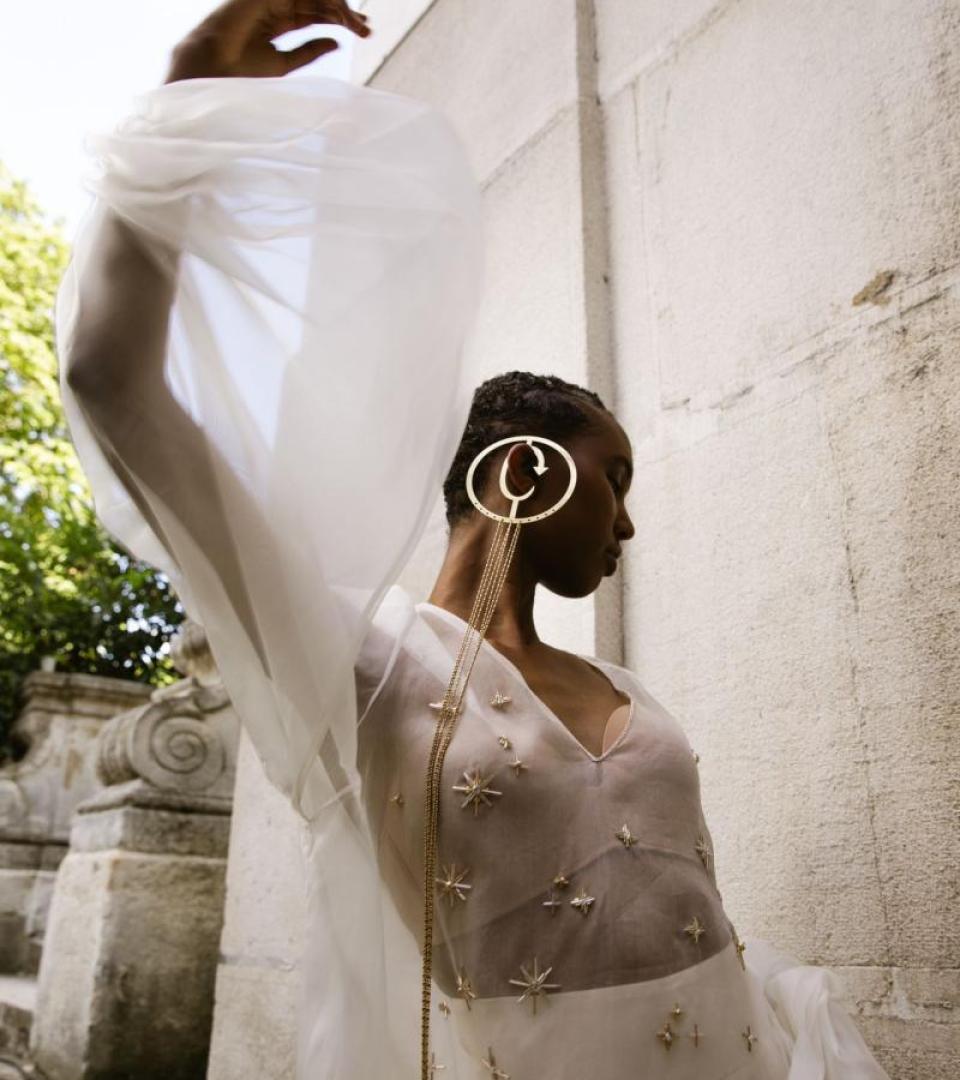Lucien Pagès: "Today, I live the dream of the passionate little boy I once was."
In last 2024, Lucien Pagès celebrated the 18th anniversary of his press office, which now represents over 150 brands in Paris and New York. This tireless enthusiast, a magnet for prestigious names and emerging talents worldwide, lets himself be driven by his intuition and his audacity. Pagès recently joined forces with The Independents, the ever-growing global network of agencies, in order to write the next chapter of his business.
“I have no idea where my passion for fashion comes from,” admits Pagès. Born in the Cévennes, a mountainous region of southern France, he grew up far away from the Parisian frenzy. “My mother was not interested in fashion at all. My father was perhaps more of an aesthete. He socialised with sophisticated people, artists through his work.” His parents owned a hotel with a Michelin-starred restaurant. French President François Mitterand, renowned designer Pierre Paulin and German Chancellor Willy Brandt have all been there. “So we had quite an intellectual environment. Today, the irony is that I'm in hotels all the time. I always ask for the same room and I feel at home.” What he kept from his parents is a total dedication to work. “I was raised in a hotel and the customer is always right. I'm at people's service, people can call me at any time, I'm very available. I'm not a secret entity, and the more customers I have, the more available I have to be.” Tired? Never tired! “I dreamt of this life. If, as a child, someone had said to me: You jump out of a plane, you go to the Hyères Festival, then to Art Basel, then to New York for the opening of the Jacquemus boutique, then to Marrakech for the Fashion Trust Arabia, I would have signed up straight away. I was just worried that it would never happen to me.”
“Before coming to Paris, I was terrified. I thought this world wa not for me.”
It was through the press that Pagès cultivated his insatiable passion for fashion. “I used to go to the mini-market and buy Vogue, Madame Figaro and ELLE. I bought what I could with my pocket money.” There, he discovered perfume advertisements, the names of the great masters, and shaped his own taste. “I had an aunt whom I adored, Auntie Renée, who looked after me when my parents were busy. She was very open-minded and I could do whatever I wanted in her house.” She passed on to him her love of beauty. “My obsession with perfumes comes from her. It's a little piece of luxury that you can afford. It's not nostalgia, it's the roots of the little boy I was who dreamed of working in fashion in Paris. They take me back to the miniatures I had when I was a child, to the pleasure of having seen them, inaccessible, and of owning them, like relics.”
At the age of 18, Pagès discovered in a newspaper a ranking of the French fashion schools. Naturally, it was the first one, the École de la Chambre Syndicale de la Couture Parisienne, which merged with the Institut Français de la Mode in 2019, that he set his sights on, and arrived in Paris on the eve of his first school year. “I was afraid of being a village bumpkin; I thought everyone would be wearing Chanel. And of course that wasn't the case.” He remembers precisely the outfit he chose for his first day, with its Cimarron jeans, black turtleneck and Kenzo shoes. “It was the way I saw fashion, from my countryside."
“I wanted to be Yves Saint Laurent.”
It was initially as a designer that he imagined himself flourishing in the industry. “I wanted to be a couturier. I wanted to be Yves Saint Laurent. I learnt how to sew, I learnt the art of canvas.” At school, he completed a series of internships and finally got a front-row seat to the world he had so fondly imagined. He took his first steps at Dior when Gianfranco Ferré was head of artistic creation, from 1989 to 1996. “That's when things really imbue you. I remember every detail, the materials, the colours.”
Saint Laurent, the young man's Holy of Holies, held two fashion shows every season. “The first was attended by celebrities, with Catherine Deneuve and Zizi Jeanmaire, but they let students in for the second.” Pagès marvelled at the solemnity of the Haute Couture shows. “I had the feeling that what I was witnessing would no longer exist, that I was observing the end of the world.” It was Simone Baron, “an old-school Parisian journalist whom I adored and who had co-founded th ELLE magazine in 1945 with Hélène Lazareff,” who opened the doors to his dream. “Pierre Bergé adored her because she had seen the beginnings of Mr. Saint Laurent and had supported him.” Simone Barron got him an interview with the head of human resources. “I explained that I wanted to work for Mr. Saint Laurent, not in the ateliers. When I think about it, I would never dare do that today. His honesty was rewarded and he got an interview with Marie-Thérèse Herzog, head of Haute Couture accessories, and Anne-Marie Muñoz, historical director of the Yves Saint Laurent studio, who passed away on January 3rd, 2020, at the age of 87. “Marie-Thérèse Herzog was Yves Saint Laurent's first employee. Nobody ever talks about Marie-Thérèse, but she was fundamental to the history of the House. She was very discreet.”
Feeling confident, Pagès presented a collection he had imagined at school. “I was utterly insane. I had drawn up a Disco collection. Sequins, platforms, it was like The Adventures of Priscilla, Queen of the Desert!” Anne-Marie Muñoz flips the pages and replied soberly, "It's everything we hate", then walks away. “Marie-Thérèse Herzog came back to me a few minutes later and said: Mrs Muñoz has agreed that you can stay because you're discreet.” His dream then became reality and Pagès got a close-up look at the man he had admired so much. “It was another world. When Monsieur Saint Laurent arrived, the girls would put their lipstick back on, all wearing heels. It was martial!" At the end of his internship, he was offered a job to draw at variations, which he turned down. "I thank fate that I didn't, because I think I would have become a mediocre designer.”
“When I discovered the PR profession, a light bulb lit up.”
Pagès then met designer Marc Ascoli, whom he assisted for over five years. Ascoli was also a loyal collaborator of Martine Sitbon, who founded her own fashion house in 1985. Appointed creative director at Chloé in 1988, she stayed on for nine seasons. These were Pagès' first ventures outside Couture and into the world of ready-to-wear and designers. Far from imagining the KCDs and Karla Ottos whirling across the Atlantic, Pagès met Michèle Montagne, a leading PR on the Paris scene, who was then representing Sitbon. “Thierry Dreyfus organised the fashion shows and I was in charge of inviting the celebrities. One day, I came across a fax that had been sent to Sitbon and Montagne by Jessica Paster, Cate Blanchett's stylist. I immediately sent her ten or so dresses, duplicates that served as examples for the production. Cate Blanchett wore them all.” More and more initiatives were taken and his passion became clearer. If we must give credit where credit is due, “the first person to tell me to become a PR was the designer Vincent Darré. He set the ball rolling. He was leaving Moschino to join Ungaro. He had this vision for me.”
In 2006, he set up his own office and signed designer Adam Kimmel as his first client. “He was already at Colette and I loved his work, which was super chic, his perfect cashmere jumpers, his incredible cardigans, his lookbooks shot on American artists when no one else was doing that.” The two decided to open a joint office. “I was free to represent clients as long as they weren't his competitors. And I could have offices that were quite chic, on rue Debelleyme’ in the heart of the Marais district, in the 3rd arrondissement of Paris.” And the adventure got off to a roaring start.
"I knew Sacai was a treasure. A jewel like that, still buried and waiting to be discovered by the world, would never exist again."
He began working with friends, including the designer Olympia Le-Tan, who introduced him to Chitose Abe. “Nobody knew her outside Japan. It was a time without Instagram, almost without internet. A brand like that would never remain unknown today, with social networks. It will no longer be a reality to introduce people to a brand as accomplished as this.” He began representing the brand in Paris in 2009. “The people who directly supported me were Catherine Rousseau at ELLE and Nicole Picart at Figaro Madame. They were the first to come and see Sacai and fall in love with it. For me, Chitose Abe is one of the last people to have created a style. I have enormous respect for her.”
"What I'm looking for more than anything else is a genuine signature. I admire people who are in line, honest with themselves."
Jonathan Anderson, Simon Porte Jacquemus, Duran Lantink... Pagès stands as a magnet to prestigious names and the most promising emerging talents. Spotting the rare gem is a matter of intuition and sensitivity, and the result of a number of criteria. “It's a combination of elements. The clothes have to be interesting. The person must have something to say and be charismatic. Jonathan Anderson, for example, is brilliant and very cerebral. I met Simon Porte Jacquemus quite early on, even though we didn't work together straight away. It was obvious that he was a star, he is so luminous.”
Just as his career path has taken him in the past, Pagès puts people first. “For me, personality is really important. If I can't crystallise, I can't make others crystallise. And then there's luck, the chance of meeting someone. I admire people who are aligned, who are honest with themselves, who are unique. What I'm looking for above all is a genuine signature. If someone is there, it's because they must have something to say.” But it is never a question of judging taste. "I like to say that I do APC to Zimmerman. It's this big split that I also apply to beauty and lifestyle.”
“I wanted to be French but not French-centred.”
While Paris has always been a welcoming place for artists, fashion and creativity will always be in full swing worldwide. And Pagès has felt it right from the start. “As soon as I began, I wanted to organise press days in New York and London. I'd rather put my money there than make money. I wanted to be French but not French-centred, with an international scope. I knew that was necessary to represent and protect my clients to the full.”
In 2019, he ultimately opened his own offices in New York which now hires 10 people full time, while the Parisian office comprises 55 employees. “It happened naturally and I've always worked that way. I hired more people when I had more money. I never took a loan from the bank, just once during Covid because everyone else was doing it and we didn't know where we were going, and I returned the money straight away.”
“I don't want to not love the time I live in.”
At first sight, the PR profession seems to be a discreet eminence grise, one of those behind-the-scenes jobs that make a sector run, hidden from the general public. But social media, beating drums of communications strategies, are tools that need to be carefully and precisely mastered. “To understand, I need to practise. I started using Instagram straight away, and it took me a little longer to crack the TikTok formula. Of course, it's also a strategy not to be on social media, but you have to organise yourself around it. Martin Margiela did the best marketing in the world by not appearing. Rei Kawakubo remains very discreet but still is very present and recognised.” And social media is also central to the transmission of culture and information. Fashion is in perpetual motion, and not keeping up with it on an almost permanent basis can be tricky when you're at its heart. “I have a taste for the past rather than the future, but I don't want to not love the time I live in. I learn a lot from social media and they are extraordinary tools.”
“The Independents live up to their name. I'm even surprised by the independence they give us.”
In mid-December 2024, Pagès announced he was joining forces with the international group, The Independents, founded by Isabelle and Olivier Chouvet. The result of the 2017 merger of K2 (founded by the couple in the 2000s) and the Karla Otto agency, the group also owns renowned agencies such as Bureau Betak, Lefty, The Qode, Ctzar, Prodject, Atelier Athem, Kennedy and Sunshine Company. “I stayed independent for 18 years. I could have lasted longer, but I felt alone in my decision-making, I feld the weight of the solitary entrepreneurship. But, they actually live up to their name, I'm even surprised by the independence they give us.”
As with the rest of his career, his encounter with The Independents came about by chance. “I met Isabelle and Olivier because they have a house in the Cévennes. The carpenter who restored their house is a childhood friend of mine, and he said to me, ‘They do the same job as you do.’ I didn't know them.” A friendship that grew stronger with time, away from the hustle and bustle of Paris, during vacations. “Isabelle used to come to my parents' restaurant as a child. When she came back, she was overwhelmed because I'd left the house just as it was.” Well aware that a possible professional collaboration could one day see the light, things finally happened spontaneously. “For me, it was impossible to choose anyone else. Of course, I know they are very efficient. But it was a sign of destiny.”
Joining a globally interconnected whole represents the passage to a new chapter and new means of action. “In one week, we had already launched five projects that I can't talk about yet. I'm still in charge. I'm still responsible for my employees. Above all, I want to show them that they've made the right choice and not disappoint them.”
“My team is my chosen family.”
“I have a very small family, just my mother. Jonathan Ros, my PR director, has worked with me for 12 years; Romain Genestout, global digital & VIP relations director, for 10 years; Inès, my chief operating officer, was with me at the École de la Chambre Syndicale.” Pagès speaks of his team with the utmost care. “We all make decisions together, and above all, we have fun. We always play the game where we tell our best show, our worst moment. They are brilliant, I don't have to play the boss, it all happens very naturally.”
Today, Lucien Pagès stands out as a key figure in the fashion, beauty and lifestyle sectors. Omnipresent at fashion shows, presentations and events all over the world, he has built his career gradually through encounters, never resting on his laurels. That's surely the key to success: striving for your childhood dreams - and sticking with them.
Reuben Attia



